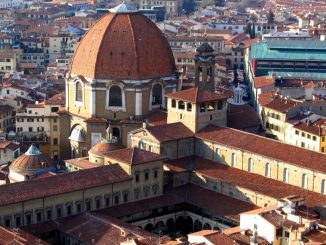Just on the outskirts of Berlin’s city centre is the very popular Charlottenburg Palace, dating from the early 18th century. It was a present from King Friedrich III to Sophie Charlotte, his wife. It is surrounded by very attractive parkland which lies beside the River Spree. Surrounding the palace is the upper class neighbourhood of Charlottenburg. A ramble around the grounds is recommended, after which one can get their culture fix in the six museums on Schlossstrasse, which faces the Palace.
During the years of the GDR, Alexanderplatz was architecturally and politically the centre of East Berlin. To this day its socialist style has retained its interest factor, with broad streets radiating from the square. One of these is Karl-Marx-Allee, which has excellent examples of previously Stalinist architecture. Alexanderplatz is bordered by Berlin’s tallest and biggest structures, such as the TV Tower. Down the road is the Nikolai Quarter, restored during the 80s, and Red City Hall. Some of Berlin’s most ancient churches, such as the Church of St. Nicholas dating back to the early 13th century and St. Mary’s Church, which dates from the late 13th century, are also here, which lends some very interesting variety to the overall look of the square.
Oranienburger Strasse, situated near the New Synagogue and Hackescher Markt, used to be where the city’s Jews lived, but this changed drastically when World War II broke out. However, since the unification of East and West Berlin, this area has become a hub of the arts, culture and entertainment, with a huge variety of eateries, pubs and exhibition spaces. In particular, the Hackescher Markt S-bahn train station, at the southern end of the street, is a 24 hour party zone. As a rule of thumb, this district is the place to go if you want to sample Berlin’s nightlife.
Potsdamer Platz and its neighbour, Leipziger Platz, used to be the centres of commerce before World War II broke out. With two train stations, a huge amount of shops, theatres, cinemas, warehouses and more, it was one of the busiest districts in Berlin, leading to the installation of the first traffic light on the continent. The years spanning the end of the Second World War and the fall of the Berlin Wall, however, created a totally different area, as the Wall divided Potsdamer Platz in two. Bordering it were no-man’s-land and what inhabitants came to know as the death zone. However, after reunification, this area was regenerated. International companies supported the effort by locating offices here, and many shops were encouraged to open in the area. A number of prestigious cinemas were also built, leading to this area’s contemporary reputation for celebrity spotting.
The Olympia Stadium lies to the west of Westend, the exclusive neighbourhood of Berlin. It was the home of the 1936 Olympic Games – a perfect opportunity for the Nazis to showcase the best of German design and architecture. They built a structure which, up to that point, would have been inconceivable. Nowadays it is the base of Hertha BSC soccer club, as well as being a popular venue for tournaments and concerts. Beside the Stadium is the Forest Theatre, which is an outdoor stage and also regularly hosts large concerts.




